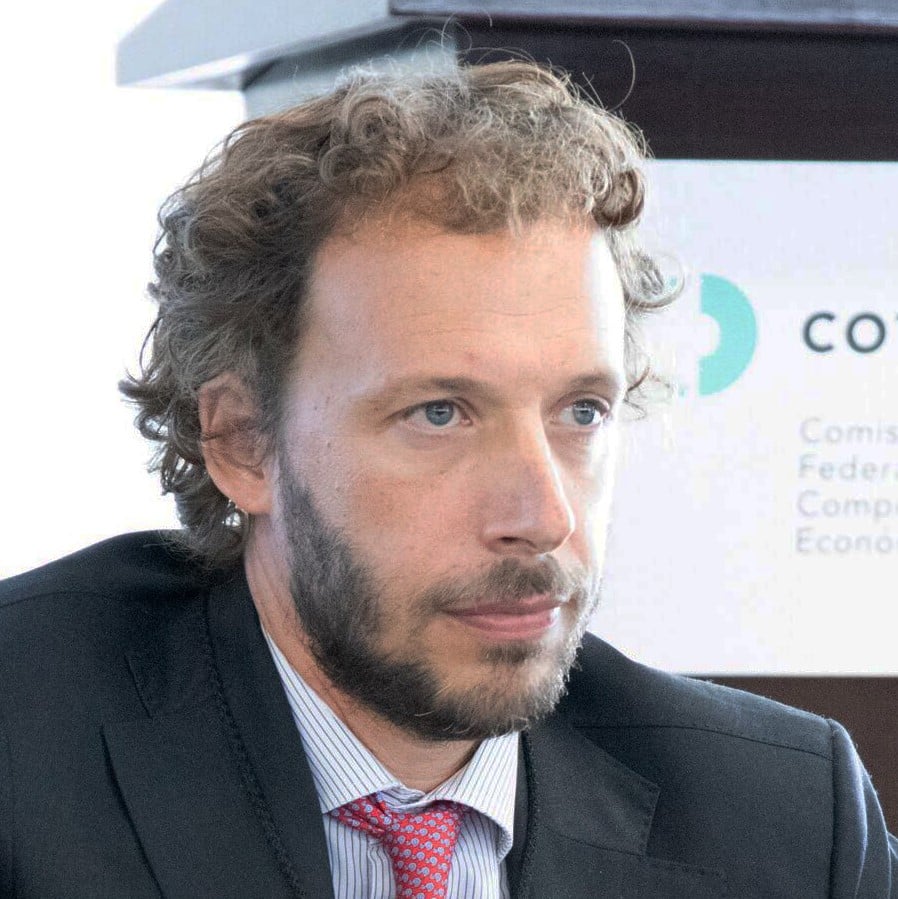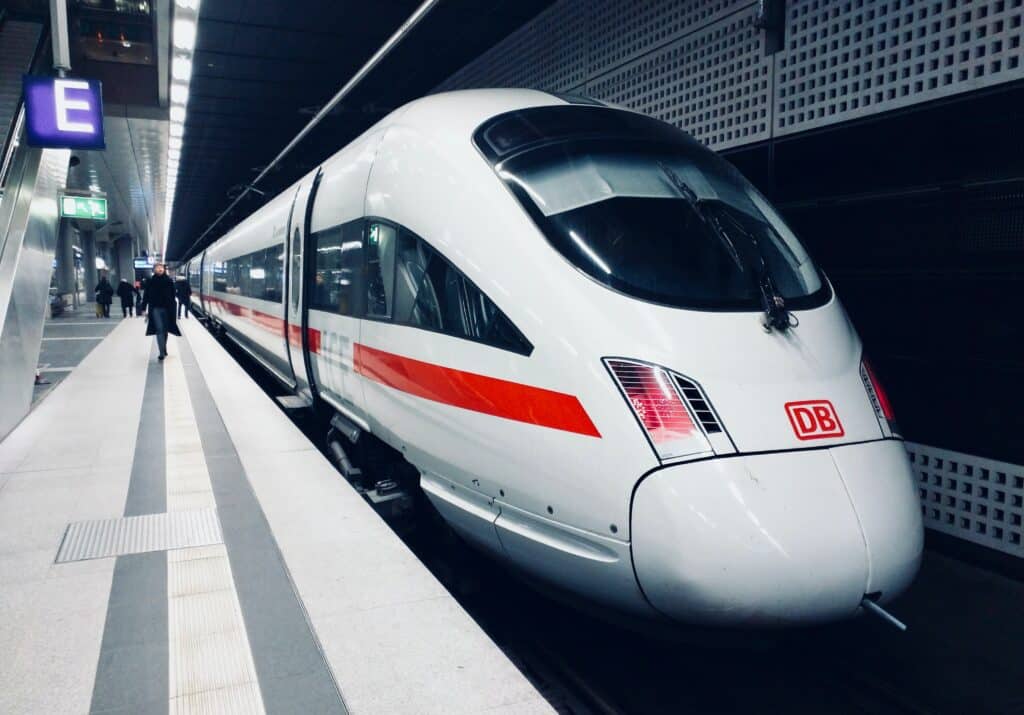Finding the right balance between competition and industrial policies at the intersection between railways and electricity regulations
"In the current challenging times, Europe should find an appropriate balance between competition and industrial policies in order to provide a much-needed framework for all European undertakings to compete on a level playing field, thus bringing to light much-awaited ambitious green transition investments" writes Andrea Minuto Rizzo, Head of European and International Institutional Affairs at Ferrovie dello Stato Italiane, in this new opinion piece, where he reflects on the discussions of the 22nd Florence Rail Forum.
This article by Andrea Minuto Rizzo, Head of European and International Institutional Affairs at Ferrovie dello Stato Italiane, originally appeared in the European Transport Regulation Observer “Electricity and Infrastructure Managers: Is there a need for Regulation?” (February, 2023).
The intersection between electricity and railways regulation has several dimensions that can be assessed both from a European policy perspective and with a temporal approach, distinguishing between short-term and long-term. This discussion is very timely, as the current energy prices crisis still exerts a considerable impact on the cost structure of rail traction.
From a short-term perspective, when facing great uncertainty, public policy decisions can, indeed, influence the future direction in a decisive way, especially in the current phase where industrial policy is back into the political agenda. However, while – on the one hand – increasing the competitiveness of Europe, also in the light of decisions taken in other jurisdictions, like the Inflation Reduction Act in the United States of America, is key, on the other hand, protecting the level playing field among countries with different fiscal space would avoid fragmenting the internal market.[1]
Against this background, promoting modal shift towards rail as the most sustainable transport mode, is among the top priorities of the Commission’s objectives within the Green Deal. In its Communication on a “Sustainable and Smart Mobility Strategy”[2], the Commission noted the need to shift towards more sustainable transport modes for both passenger and freight services, indicating very ambitious targets. Rail freight traffic must increase by 50% by 2030 and double by 2050, while highspeed traffic must double by 2030 and triple by 2050.
But in the meantime, energy prices have soared, sometimes to an unbearable level, and emergency regulations have been put in place both at European and national levels. In this challenging situation, the goal of a decarbonised European transport and mobility sector should not only remain achievable but also ensure an equal basis, without differentiations based on the country where an undertaking is located. Otherwise, the risk of a reverse modal shift becomes more concrete, with fossil-fuel-reliant transport modes gaining a competitive advantage over more sustainable, electricity-based transport modes such as railways, as well the one of a fragmented and uneven playing field.
At the initiative of the Commission, Council Regulation n. 1854/22[3], adopted on 6 October 2022, consists in an emergency intervention to address high energy prices, while preserving the functioning of the EU’s electricity market and security of supply. The Council Regulation includes an integrated and interdependent package of four emergency interventions, including – among others – a wholesale cap on the market revenues of inframarginal technologies (e.g., nuclear, renewables). Interventions do not include an electricity retail price cap, which could have been considered at European level for services of general interest, such as rail, to stabilise it against inflation while – in certain cases – it has been taken into account at national level by countries with sufficient fiscal space. In that regard, policymakers should beware of possible unintended long-term effects of these discrepancies in short-term emergency rules. State aid cannot be the only European solution and should be accompanied by fair support mechanisms that maintain the integrity and unity of the internal market.
Moving to the medium and longer term, Repower EU is one of the solutions envisaged by the European Commission to tackle these issues. On 18 May 2022[4], in response to the hardships and global energy market disruption caused by Russia’s invasion of Ukraine, the European Commission presented the REPowerEU Plan with the aim of accelerating clean energy deployment and promoting energy efficiency and the use of renewable sources. It could offer the possibility to support the rail sector both – on the one hand – supporting zero emission transport and its infrastructure and – on the other hand – when it might contribute to increasing the share and accelerating the deployment of renewable energy, such as on transport infrastructure. According to the EU Solar Energy Strategy[5], highways or railway tracks present, indeed, an unexploited potential for solar energy deployment.
In that wider context, FS has set a goal to become self-producer of energy, enabling it to become one of the largest producers of renewable energy, thus playing an active role in the green transition. As early as 2027, according to its 10-year Industrial Plan, FS aims at covering 40% of its energy needs, producing up to 2.6 TWh, with an investment of more than 1.6 billion euros. As FS is the first consumer of energy in Italy, with 2 percent of national consumption, it will weigh less on the Italian electricity system. At the beginning of 2023, it has already launched a 130 million tender for twenty photovoltaic plants to be installed in those areas adjacent to railway electrical substations and from 2024, it will start generating energy, while additional tenders are expected later this year.[6] This will offer a concrete contribution to the country’s green transition, hoping it will generate a possible multiplier effect also at European level, with Italy and Europe being less dependent on imported fossil energy sources.
European public policy decisions will continue to be key to help private investments such as the one described above become a reality. The Green Deal Industrial Plan, presented by the European Commission on February 1st with the aim of putting Europe’s net-zero industry in the lead, goes in the right direction, especially in two respects, both related to the definition of a predictable and simplified regulatory environment but not only. First of all, by ensuring a simplified and fast-track permit-granting process, as well as access to critical raw materials.[7] Secondly, by proposing, on top of existing European financial tools, the introduction of a possible European Sovereignty Fund to give a structure and an answer to the investment needs in strategic sectors.
In such difficult times, Europe should find an appropriate balance between competition and industrial policies in order to provide a much-needed framework for all European undertakings to compete on a level playing field, thus bringing to light much-awaited ambitious green transition investments.
[1] Special meeting of the European Council (9 February 2023) – Conclusions (https://www.consilium.europa.eu/media/61997/2023-02-09-euco-conclusions-en.pdf).
[2] European Commission’s Communication « Sustainable and Smart Mobility Strategy – putting European transport on track for the future », https://ec.europa.eu/info/law/better-regulation/have-your-say/initiatives/12438-Sustainable-and-Smart-Mobility-Strategy_en.
[3] https://eur-lex.europa.eu/legal-content/EN/TXT/PDF/?uri=CELEX:32022R1854&qid=1676213980555&from=en.
[4] Communication from the Europen Commission REPowerEU Plan https://energy.ec.europa.eu/system/files/2022-05/COM_2022_230_1_EN_ACT_part1_v5.pdf
[5] Communication from the Europen Commission ‘ EU Solar Energy Strategy’ https://eur-lex.europa.eu/resource.html?uri=cellar:516a902d-d7a0-11ec-a95f-01aa75ed71a1.0001.02/DOC_1&format=PDF
[6] https://www.fsnews.it/it/focus-on/corporate/2023/1/19/energia-gruppo-fs-gara-130-milioni-20-impianti-fotovoltaici.html
[7] https://commission.europa.eu/document/41514677-9598-4d89-a572-abe21cb037f4_en






